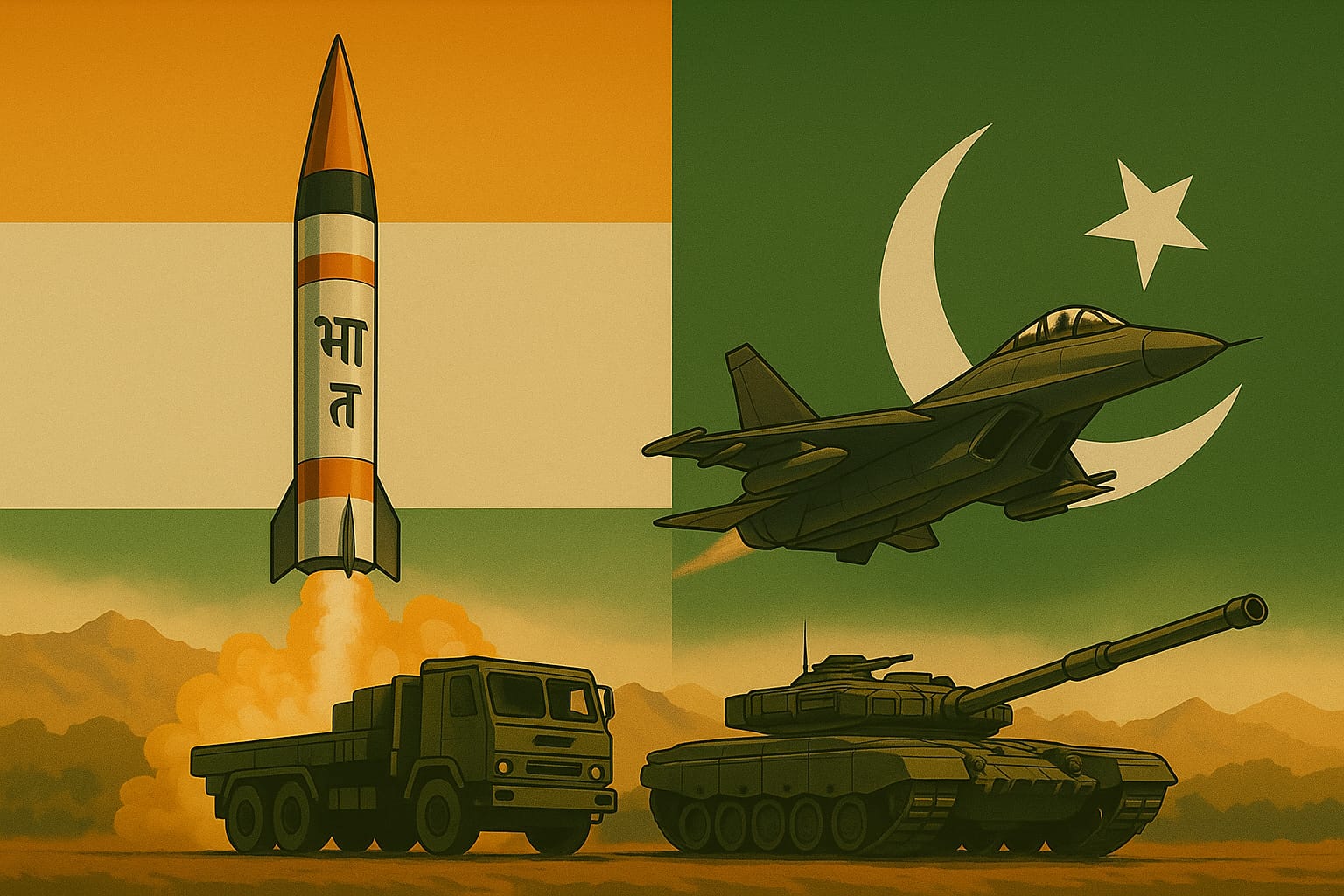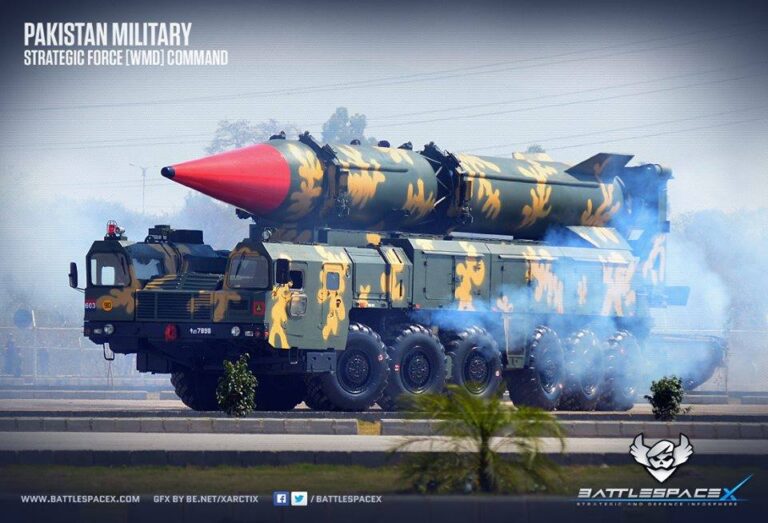
Muhammad Shareh Qazi
In one of his seminal books, Strategy in the Missile Age, Bernard Brodie said the advent of nuclear weapons and missiles had shifted the focus away from the traditional ideas surrounding war toward deterrence. Beyond Brodie, nuclear deterrence has undergone tectonic shifts as theorists and policymakers grapple with a fundamental question: How destabilizing is the use of dual-capable weapons?
The answer to this question can perhaps be found in two contemporary situations: the ongoing Russia-Ukraine war and the May 2025 Pakistan-India crisis. While the former scenario has been theorized and contextualized by international scholarship, these are still early days for the latter. When Russia fired Kinzhal and Tsirkon/Zircon hypersonic weapons, it was seen as a significantly destabilizing ‘risk.’ Earlier, when China unveiled its DF-26 intermediate-range ballistic missile (IRBM)—a dual-capable platform—Ankit Panda, Stanton Senior Fellow in the Nuclear Policy Program at the Carnegie Endowment for International Peace, evaluated it as a ‘dangerous feature.’ Even Manpreet Sethi, Acting Director at the Asia-Pacific Leadership Network and Distinguished Fellow at the Centre for Air Power Studies, New Delhi, said such technologies and strategies pose a threat of ‘more uninhibited use in the future.’
For Pakistan, the challenge is to avoid warhead ambiguity while still adhering to its commitment not to cross key thresholds. For New Delhi, the strategy of aggressively pursuing dual-capable missile development and the active use of such weapons during crises calls into question its No First Use (NFU) policy. Beyond this theoretical quagmire, the following developments in the Indian missile program raise key concerns:
- The July 28, 2025, test of the Pralay-6 short-range surface-to-surface missile
- Accelerated development of the BrahMos NG (Next Generation) cruise missile
- Indian claims of the active use of BrahMos and Nirbhay missiles against countervalue and counterforce targets during Operation Sindoor
- DRDO’s conventional Agni-V intercontinental ballistic missile program
Mapping Pakistan’s Choices
What all these developments have in common is the indication that future crises between the two states would see India fully deploying dual-capable weapons against Pakistan as an integral part of its warfighting strategy. Future programs, such as the hypersonic cruise missile BrahMos II, would further militate against restraint. Therefore, for Pakistan, hard-kill options would most likely range from high-supersonic speed to hypersonic precision munitions specifically tailored to deliver conventional warheads.
This will not fully address Islamabad’s current concern that India now openly endorses the use of dual-capable missiles in combat, intensifying the risk of false positives due to mischaracterization. Even in such a scenario, it is highly likely that Pakistan would adhere to its commitment to restraint, but the pressure to adopt a more aggressive posture would only increase. Although such a strategy has not yielded significant strategic advantages for Russia, India continues to test and develop such weapons, distribute them to all its services, and push for the continuation of Operation Sindoor. This indicates that the space for restraint is diminishing and that any new crisis could lead to accelerated, uncontrollable escalation. This is primarily due to New Delhi’s insistence on broadening its dual-capable missile arsenal across all domains and its consistent violations of physical thresholds in South Asia.
Thus, for Pakistan, the new challenge is not only to ensure that it deters India from any future adventurism involving dual-capable missiles but also to complicate India’s strategy of actively challenging deterrence through the use of such systems in future crises. This could be achieved either by targeting such weapon systems before they are launched or by inducting weapons capable of neutralizing them before they create any strategic consequences. Another option would be to develop weapons platforms that overmatch Indian systems but remain strictly committed to delivering conventional payloads. Advocating such measures does pose the risk of an arms race; however, in the absence of arms control, this appears to be a peripheral concern.
While arguing in favor of a ballistic missile defense shield may sound premature, advanced surface-to-air missiles, electronic and disruptive technologies, as well as high-supersonic and/or hypersonic conventional missiles, seem to be a relevant fix in the short to medium term to bolster deterrence. This may not be a choice but rather a compulsion, as New Delhi continues to push for such strategies and missile programs—a process not likely to slow down in the immediate future.
The debate surrounding the effects of dual-capable missiles lies between the argument that they are not risky and should therefore remain inducted, and the argument that they are very risky and therefore need to be regulated. Either way, limited commentary on South Asia’s practical experience in this aspect indicates serious concerns for the future. The space for Pakistan to counter this growing offensive strategy by New Delhi—marked by complete disregard for escalation dynamics—represents the apogee of accelerated escalation in any future crisis. To quote Robert S. McNamara, “The indefinite combination of human fallibility and nuclear weapons will lead to the destruction of nations.”
Dr. Muhammad Shareh Qazi is Assistant Professor, Department of Political Science, University of the Punjab.
The views expressed in the article are the authors’ own and do not necessarily reflect those of Pakistan Politico.




